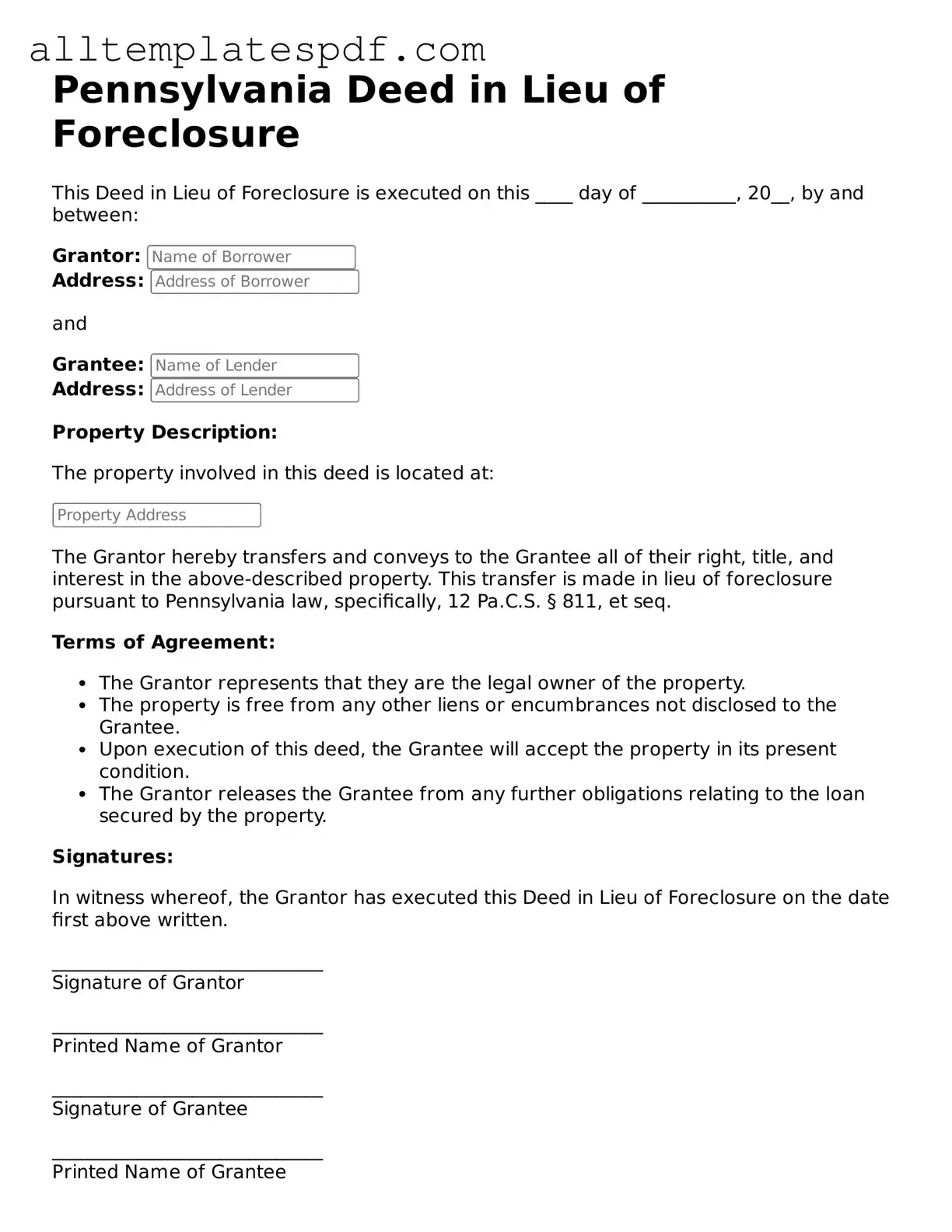Filling out the Pennsylvania Deed in Lieu of Foreclosure form can be a complex process, and mistakes can have serious consequences. One common error occurs when individuals fail to provide accurate property descriptions. The legal description must be precise, as it identifies the property being conveyed. Omitting details or using vague language can lead to disputes or delays in processing the deed.
Another frequent mistake is neglecting to include all necessary parties. When a property is owned jointly, all owners must sign the deed. Failing to obtain the signature of even one co-owner can invalidate the entire document. It’s crucial to ensure that everyone with an interest in the property is included to avoid future complications.
People often overlook the importance of notary requirements. In Pennsylvania, a Deed in Lieu of Foreclosure must be notarized to be legally binding. Skipping this step can render the deed ineffective. It’s advisable to have a notary present during the signing to confirm the identities of all parties involved.
Additionally, some individuals make the mistake of not understanding the implications of the deed. A Deed in Lieu of Foreclosure transfers ownership of the property to the lender, which may impact future credit opportunities. Consulting with a financial advisor or legal expert before proceeding can help clarify these consequences.
Another common error is failing to communicate with the lender. Before completing the deed, it is essential to discuss the process with the lender and understand their requirements. Miscommunication can lead to unexpected issues, such as the lender rejecting the deed or imposing additional conditions.
Lastly, individuals sometimes forget to keep copies of the completed deed and related documents. Retaining a record of all paperwork is vital for future reference. This documentation may be necessary for tax purposes or if disputes arise later on. Keeping organized records can save time and stress down the road.
